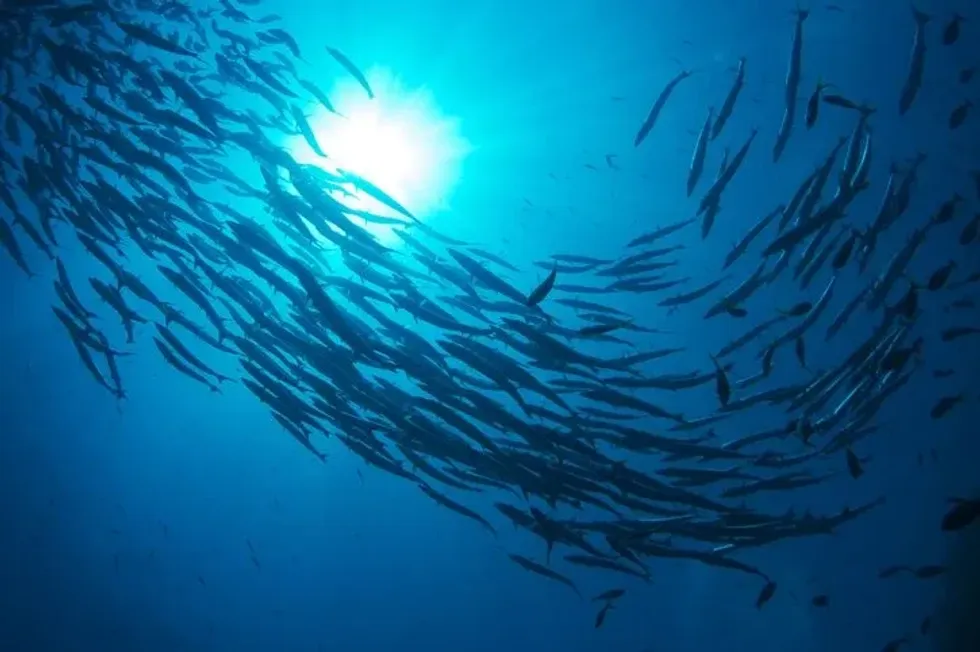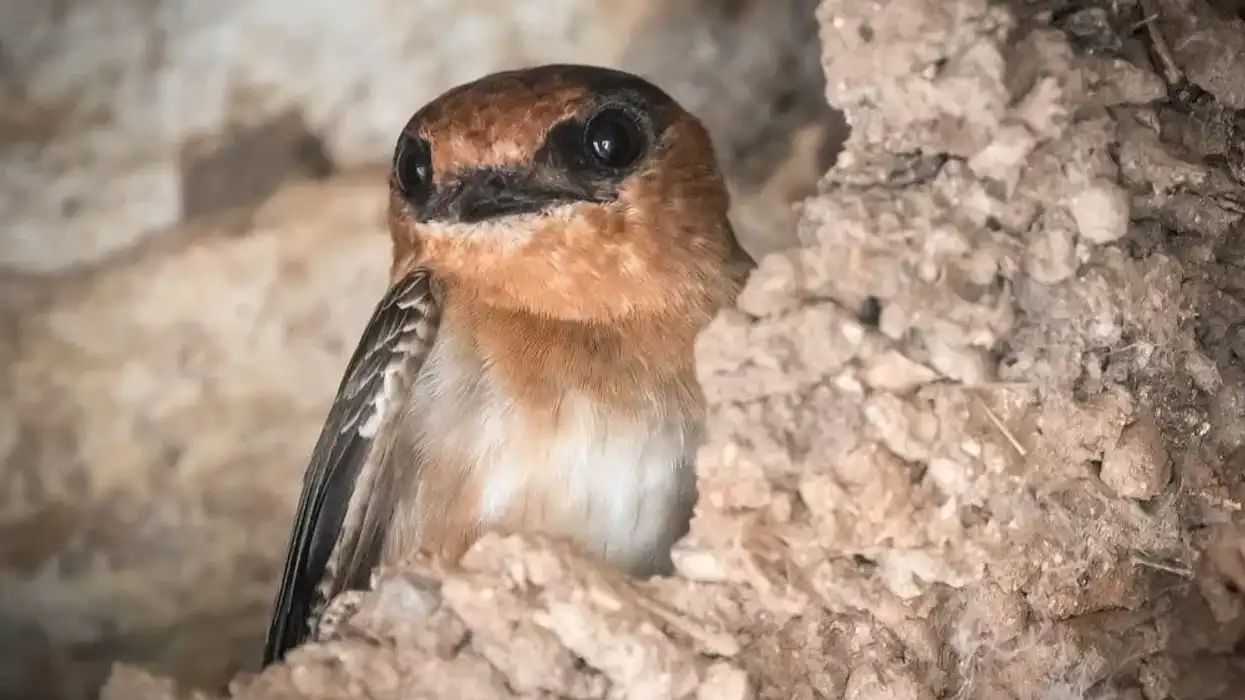The great barracuda, scientific name being Sphyraena barracuda, belongs to the family of ray-finned fishes. Its razor sharp teeth can kill any large fish, instantly cutting it in half. They are large fishes and exude predatory behavior.
They can sometimes be deep swimmers but are mostly found in coastal waters. They prefer habitats in warm and temperate water.
A great adult barracuda may be 58 in (4.9 ft) in length but can further develop and reach 72 in (6.0 ft) in length. The average weight of a barracuda is 53 lb (23 kg). Some barracudas can be longer in body length and weigh twice than the average body weight.
The coloration of a barracuda differs according to its species. Approximately, there are more than 20 species of barracuda fish. Some of them are guachinche barracuda, Plymouth barracuda, Pacific barracuda and yellowstripe barracuda.
After reading these great barracuda facts, you may also look at rockfish facts and tetra facts.
Barracuda Interesting Facts
What type of animal is a barracuda?
The great barracuda (Sphyraena) is a marine fish. They are top predators and prey on small as well as large fishes. Their ferocious and aggressive behavior indulges them in hunting in the ocean.
They are not found in the depths of the ocean but mostly prefer coastal or tropical waters. They are known for their razor sharp teeth, the lower jaw juts out while the upper jaw is a bit retracted. Both the jaws are filled with their razor shar teeth.
What class of animal does a barracuda belong to?
Barracuda is an animal belonging to the class of fish. They are large fishes that have razor-like teeth.
They are full of small scales and have an appearance similar to that of a snake. Their mouth is large and consists of two pairs of teeth which are unequal. The outer row of teeth is fang-like in nature which are similar to the teeth of a piranha.
How many barracudas are there in the world?
There are more than 20 species of barracuda fish (family Sphyraenidae) found all over the world living in the Red Sea, the Arabian Sea, Atlantic Ocean from Massachusetts in the United States to Brazil and also in the Indian Ocean. The conservation status of barracuda fish is listed as Not Extinct which suggests that their population is not Endangered.
These fishes live in groups known as schools that offer them protection from predators.
Where does a barracuda live?
The great barracuda (Sphyraena) lives in coastal and tropical seas and oceans where the temperature is moderate.
They are not deep-sea fishes and are found in the Pacific Ocean in Fiji, Malaysia, and Indonesia, in the Indian Ocean in Burma, Maldives, and Thailand, and the Atlantic Ocean in several locations from the US to Brazil.
This fish has emerged as an ace predator in its habitat where the sharp teeth in its jaw make it a sight to behold.
For offering protection to young fishes, barracudas live in groups known as schools.
What is a barracuda's habitat?
There are approximately 26 species of the barracuda fish that can be found in multiple locations all over the world. Barracuda habitat consists of spaces near the shore in mangroves, seagrass beds and coral reefs. They can also be found in open oceans.
Their preferred habitat is coastal or tropical waters. Young and adult barracudas are mostly found in freshwater regions and tend to avoid saline water. If they spot a predator, they dive deeper in the water for protection.
Who do barracudas live with?
Barracudas are solitary fishes but are sometimes found in groups. They can be spotted swimming in shoals in sandy bottoms. The juveniles and the developing barracuda fish stay with the group but the parents do not care for the baby. After reaching adulthood, they usually live their individual life while some stick to their school.
How long does a barracuda live?
The average lifespan of a barracuda (Sphyraena) is 12 to 14 years. The juvenile barracudas are helpless and become easy prey for large fishes.
The female barracuda fish lays more than 1,000 eggs in the ocean after reproduction, but only a few survive through adulthood. Their predators are limited and are large fishes like dolphins, killer whales, and sharks. Habitat loss, illness, pollution and marine accidents can cause the early death of a barracuda.
How do they reproduce?
The season of breeding, considering the great barracuda fish as well its location, is still unclear. The females lay eggs while the males lay sperm underwater in shallow areas.
The eggs, after fertilization, will hatch. This process is known as external fertilization. The fertilized eggs will float in the open ocean or estuaries till they hatch.
The hatching process starts after 13 to 14 hours, but till then, only a few eggs remain. These eggs hatch, and the young larvae feed on vegetation initially and then hunt small fishes after development.
What is their conservation status?
The conservation status of barracuda species is Not Extinct, which suggests that the numbers of the barracuda fish are stable. Killer whales, sharks, and dolphins are known to prey on barracudas.
Apart from that, they can also be killed due to ocean acidification, loss of coral reefs, seagrass beds, and mangroves. They can also get entangled in fishing nets where overfishing is practiced. Accidental collisions with boats or sea vessels approaching at great speeds can also cause their death.
Barracuda Fun Facts
What do barracudas look like?
The color of barracudas (family Sphyraenidae) can change according to their species ranging from dark green, dark grey and blue to the white underbelly and silvery sides. They have a wide mouth that has two sets of teeth.
Both sets of these teeth have dozens each, but the exact amount of teeth cannot be confirmed. They are elongated and are known for their hunting skills with those sharp teeth.
They have two dorsal fins and a pointed tail-fin resembling a fork. There are 18 to 25 dark black bars present on the upper body of barracuda, while the underbody is chalky white with some black spots.
How cute are they?
They are not very cute because of their aggressive look and behavior. Even while resting, barracudas are very alert and if they suspect danger are ready to attack. They have sharp teeth which can cut huge fishes in half. Their appearance is violent, but they are not ugly-looking.
How do they communicate?
When barracudas lay eggs, they leave them to drift in the open ocean after fertilization. This can be a major reason why only a few eggs turn into larvae, finally developing into adults.
The parents do not care for the eggs after they are laid. Great barracudas use their eyesight to be aware of any approaching danger or even for hunting.
How big is a barracuda?
Barracuda's size can be 24-39 in (60-99 cm) and the average bodyweight of barracuda is 5.5-20 lb (2.4-9 kg). Few species of the barracuda are exceptionally large, and the recorded body weight was 96 lb (43 kg).
How fast can a barracuda swim?
The great barracuda can swim at a speed of 36 mph (57 kmph).
How much does a barracuda weigh?
The barracuda's average weight is 5.5-20 lb (2.4-9 kg).
What are the male and female names of the species?
There are no different names for the male and female barracudas. They are commonly known as the giant barracudas or the great barracudas. If they appear together in groups, they are known as shoals or schools.
What would you call a baby barracuda?
Baby barracudas are commonly called juveniles or offspring and do not have a specific scientific name.
What do they eat?
Barracudas are carnivorous in nature and consume small as well as large fishes. A barracuda diet includes mullets, snappers, herrings, killifishes, tuna, anchovies, groupers, jacks, and grunts. They are opportunistic predators which cut their prey in half with the help of their piercing teeth.
Are they dangerous?
Yes, great barracudas, being predators, pose a serious threat to human beings and this can result in attacks if provoked. They are curious and very aggressive. Although human attacks are rare, they can kill a human being instantaneously, piercing the skin with their sharp teeth. Humans can be accidental prey and can attract barracudas easily.
Would they make a good pet?
No, barracudas cannot make good pets as they naturally are found in salt waters. They also cannot live long if kept as a pet and will die soon.
Did you know...
Barracudas are usually attracted to shiny objects and often attack snorkelers wearing a watch or gold objects on their body. Hence, you must not wear any shiny object in areas that have barracudas.
They are nocturnal fishes and carry out their hunting activities at night.
Is it safe to eat barracuda?
Small barracudas are safe and delicious to eat after cooking. Larger barracudas are unsafe to eat as they might contain the toxin called ciguatera. Small reef fish usually consume toxic algae from the seagrass beds which are then consumed by barracudas. Eating a barracuda containing ciguatera can cause mercury poisoning in human beings.
How many teeth do barracudas have?
Barracuda teeth are in two sets that are used for different purposes. The front ones are the razor sharp teeth, used for tearing or ripping the body of the prey, while the inner set of teeth are large and help in chopping, piercing, or holding small fishes and other food products.
A barracuda bite can result in laceration, hence you should not wear shiny objects in areas where barracudas are present.
Is a barracuda a shark?
No, barracudas are ray-finned tropical or coastal fishes. The similarity between sharks and barracudas is that they are predatory in nature and violent. They both have the ability to kill a human being and large fishes.
Here at Kidadl, we have carefully created lots of interesting family-friendly animal facts for everyone to discover! Learn more about some other fish including tang fish, or catfish.
You can even occupy yourself at home by drawing one of our barracuda coloring pages.










